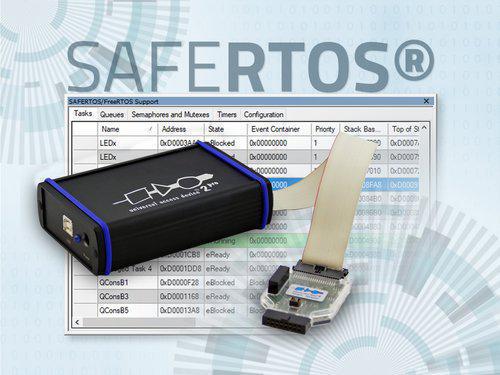UDE® Universal Debug Engine with support for SAFERTOS
Lauta (Germany), Bristol (UK), April 21, 2020 – PLS Programmierbare Logik & Systeme has expanded its UDE® Universal Debug Engine with a comprehensive add-on for the SAFERTOS® real-time operating system. As a powerful development platform for debugging, testing and system analysis of microcontroller applications, UDE® now offers additional and very helpful functions for software development of real-time and safety-critical applications using the SAFERTOS real-time operating system.
SAFERTOS is a pre-emptive, safety critical RTOS from WITTENSTEIN high integrity systems that delivers unprecedented levels of determinism and robustness to embedded systems, whilst using minimal resources. It is used internationally across a wide range of safety critical applications and is renowned for its high software quality. SAFERTOS is available pre-certified by TÜV SÜD to ISO 26262 ASIL D and IEC 61508 SIL 3. A key advantage for customers is the upgrade path from FreeRTOS to SAFERTOS; developers can prototype using FreeRTOS and convert to SAFERTOS at the start of formal development.
The SAFERTOS Add-On from PLS provides an additional window within the UDE® framework that provides a comprehensive and detailed view of the SAFERTOS resources and objects. This gives developers access to all information relevant for their development. The information shown by the SAFERTOS Support Window is divided into functional groups which typically include task information, queues, semaphores and mutexes, and timers, as well as information about the current configuration. By using separate tab pages the user can easily navigate between these groups. The available information shown by the SAFERTOS Support Window depends on the particular SAFERTOS configuration, which is determined at compile time and does not change during run-time. UDE® collects the data via the debug interface directly from the target system. The big advantage of this is that no separate description file is required. This prevents inconsistencies between displayed and actually available RTOS states, which could result from an incorrect creation process.
As an example, aided by the SAFERTOS Add-On, the developer can now comprehend which task is currently active when he debugs a certain function. In addition, the display of blocked and blocking tasks greatly simplifies troubleshooting when deadlocks occur within the application. Last but not least, the available information about the operating system resources, e.g. the stack utilization, supports users to better balance the load of the applications and in general helps in optimization.

